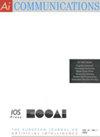Perspectives on the System-level Design of a Safe Autonomous Driving Stack
IF 1.4
4区 计算机科学
Q4 COMPUTER SCIENCE, ARTIFICIAL INTELLIGENCE
引用次数: 1
Abstract
Achieving safe and robust autonomy is the key bottleneck on the path towards broader adoption of autonomous vehicles technology. This motivates going beyond extrinsic metrics such as miles between disengagement, and calls for approaches that embody safety by design. In this paper, we address some aspects of this challenge, with emphasis on issues of motion planning and prediction. We do this through description of novel approaches taken to solving selected sub-problems within an autonomous driving stack, in the process introducing the design philosophy being adopted within Five. This includes safe-by-design planning, interpretable as well as verifiable prediction, and modelling of perception errors to enable effective sim-to-real and real-to-sim transfer within the testing pipeline of a realistic autonomous system.安全自动驾驶堆栈系统级设计展望
实现安全和强大的自动驾驶是自动驾驶汽车技术广泛应用的关键瓶颈。这促使我们超越外在指标(如脱离距离),并呼吁通过设计体现安全的方法。在本文中,我们解决了这一挑战的一些方面,重点是运动规划和预测问题。我们通过描述解决自动驾驶堆栈中选定子问题的新方法来实现这一点,并在此过程中介绍了Five所采用的设计理念。这包括安全的设计规划、可解释和可验证的预测,以及感知误差建模,以实现在现实自主系统的测试管道中有效的模拟到真实和真实到模拟的传输。
本文章由计算机程序翻译,如有差异,请以英文原文为准。
求助全文
约1分钟内获得全文
求助全文
来源期刊

AI Communications
工程技术-计算机:人工智能
CiteScore
2.30
自引率
12.50%
发文量
34
审稿时长
4.5 months
期刊介绍:
AI Communications is a journal on artificial intelligence (AI) which has a close relationship to EurAI (European Association for Artificial Intelligence, formerly ECCAI). It covers the whole AI community: Scientific institutions as well as commercial and industrial companies.
AI Communications aims to enhance contacts and information exchange between AI researchers and developers, and to provide supranational information to those concerned with AI and advanced information processing. AI Communications publishes refereed articles concerning scientific and technical AI procedures, provided they are of sufficient interest to a large readership of both scientific and practical background. In addition it contains high-level background material, both at the technical level as well as the level of opinions, policies and news.
 求助内容:
求助内容: 应助结果提醒方式:
应助结果提醒方式:


